Sudipta Sengupta
BASS: Batched Attention-optimized Speculative Sampling
Apr 24, 2024



Abstract:Speculative decoding has emerged as a powerful method to improve latency and throughput in hosting large language models. However, most existing implementations focus on generating a single sequence. Real-world generative AI applications often require multiple responses and how to perform speculative decoding in a batched setting while preserving its latency benefits poses non-trivial challenges. This paper describes a system of batched speculative decoding that sets a new state of the art in multi-sequence generation latency and that demonstrates superior GPU utilization as well as quality of generations within a time budget. For example, for a 7.8B-size model on a single A100 GPU and with a batch size of 8, each sequence is generated at an average speed of 5.8ms per token, the overall throughput being 1.1K tokens per second. These results represent state-of-the-art latency and a 2.15X speed-up over optimized regular decoding. Within a time budget that regular decoding does not finish, our system is able to generate sequences with HumanEval Pass@First of 43% and Pass@All of 61%, far exceeding what's feasible with single-sequence speculative decoding. Our peak GPU utilization during decoding reaches as high as 15.8%, more than 3X the highest of that of regular decoding and around 10X of single-sequence speculative decoding.
Bifurcated Attention for Single-Context Large-Batch Sampling
Mar 13, 2024Abstract:In our study, we present bifurcated attention, a method developed for language model inference in single-context batch sampling contexts. This approach aims to reduce redundant memory IO costs, a significant factor in latency for high batch sizes and long context lengths. Bifurcated attention achieves this by dividing the attention mechanism during incremental decoding into two distinct GEMM operations, focusing on the KV cache from prefill and the decoding process. This method ensures precise computation and maintains the usual computational load (FLOPs) of standard attention mechanisms, but with reduced memory IO. Bifurcated attention is also compatible with multi-query attention mechanism known for reduced memory IO for KV cache, further enabling higher batch size and context length. The resulting efficiency leads to lower latency, improving suitability for real-time applications, e.g., enabling massively-parallel answer generation without substantially increasing latency, enhancing performance when integrated with postprocessing techniques such as reranking.
A Static Evaluation of Code Completion by Large Language Models
Jun 05, 2023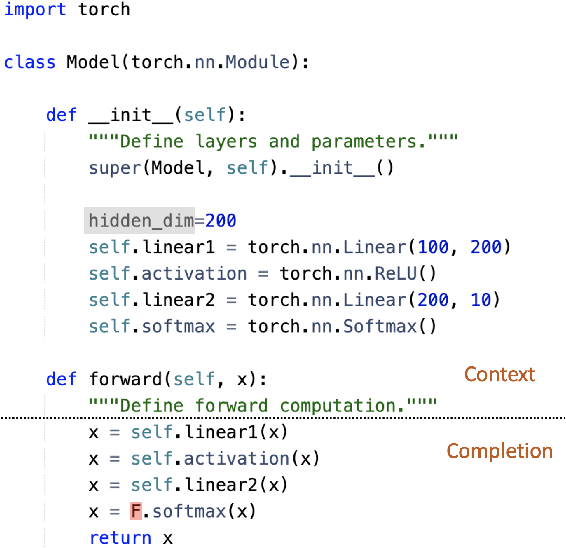
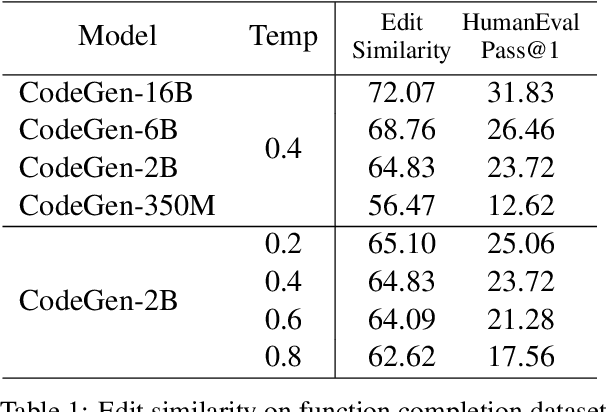
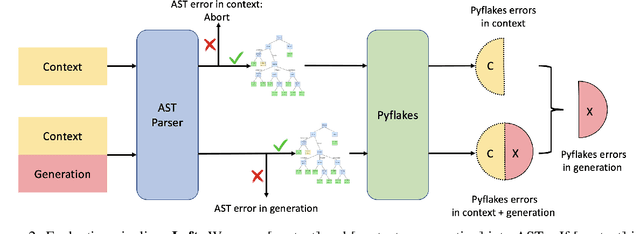
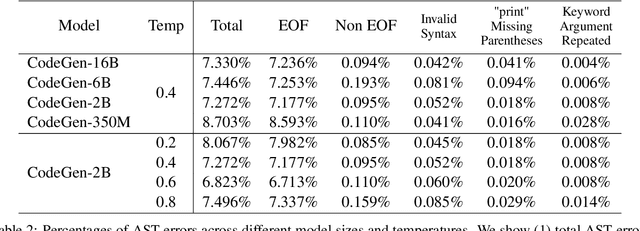
Abstract:Large language models trained on code have shown great potential to increase productivity of software developers. Several execution-based benchmarks have been proposed to evaluate functional correctness of model-generated code on simple programming problems. Nevertheless, it is expensive to perform the same evaluation on complex real-world projects considering the execution cost. On the contrary, static analysis tools such as linters, which can detect errors without running the program, haven't been well explored for evaluating code generation models. In this work, we propose a static evaluation framework to quantify static errors in Python code completions, by leveraging Abstract Syntax Trees. Compared with execution-based evaluation, our method is not only more efficient, but also applicable to code in the wild. For experiments, we collect code context from open source repos to generate one million function bodies using public models. Our static analysis reveals that Undefined Name and Unused Variable are the most common errors among others made by language models. Through extensive studies, we also show the impact of sampling temperature, model size, and context on static errors in code completions.
Multi-lingual Evaluation of Code Generation Models
Oct 26, 2022

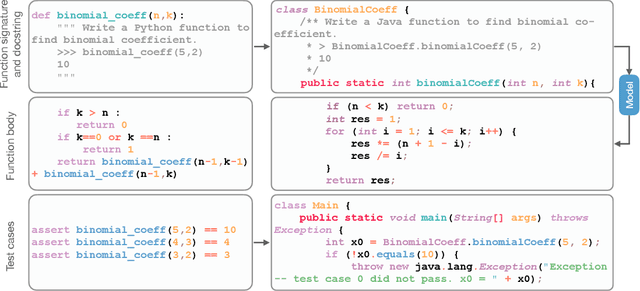

Abstract:We present MBXP, an execution-based code completion benchmark in 10+ programming languages. This collection of datasets is generated by our conversion framework that translates prompts and test cases from the original MBPP dataset to the corresponding data in a target language. Based on this benchmark, we are able to evaluate code generation models in a multi-lingual fashion, and in particular discover generalization ability of language models on out-of-domain languages, advantages of large multi-lingual models over mono-lingual, benefits of few-shot prompting, and zero-shot translation abilities. In addition, we use our code generation model to perform large-scale bootstrapping to obtain synthetic canonical solutions in several languages. These solutions can be used for other code-related evaluations such as insertion-based, summarization, or code translation tasks where we demonstrate results and release as part of our benchmark.
Improving Text-to-SQL Semantic Parsing with Fine-grained Query Understanding
Sep 28, 2022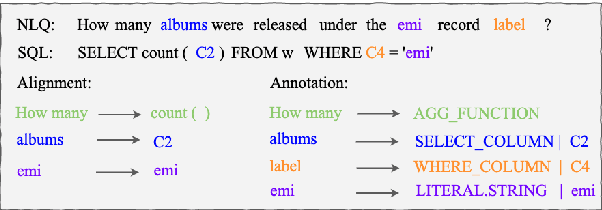
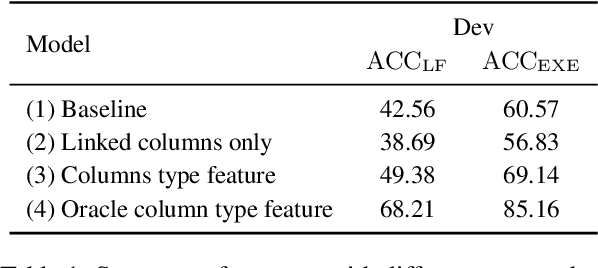
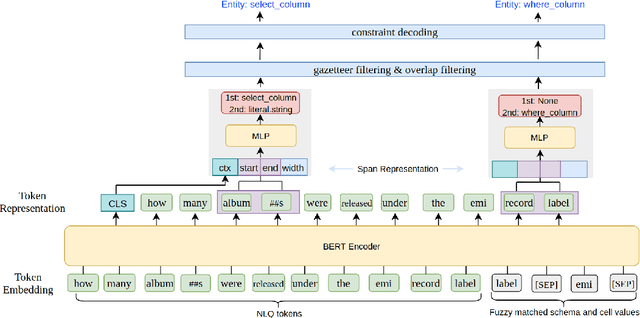
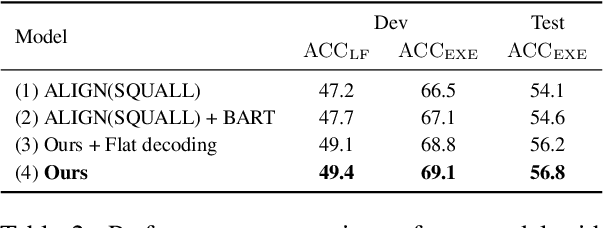
Abstract:Most recent research on Text-to-SQL semantic parsing relies on either parser itself or simple heuristic based approach to understand natural language query (NLQ). When synthesizing a SQL query, there is no explicit semantic information of NLQ available to the parser which leads to undesirable generalization performance. In addition, without lexical-level fine-grained query understanding, linking between query and database can only rely on fuzzy string match which leads to suboptimal performance in real applications. In view of this, in this paper we present a general-purpose, modular neural semantic parsing framework that is based on token-level fine-grained query understanding. Our framework consists of three modules: named entity recognizer (NER), neural entity linker (NEL) and neural semantic parser (NSP). By jointly modeling query and database, NER model analyzes user intents and identifies entities in the query. NEL model links typed entities to schema and cell values in database. Parser model leverages available semantic information and linking results and synthesizes tree-structured SQL queries based on dynamically generated grammar. Experiments on SQUALL, a newly released semantic parsing dataset, show that we can achieve 56.8% execution accuracy on WikiTableQuestions (WTQ) test set, which outperforms the state-of-the-art model by 2.7%.
Neuro-Symbolic Language Modeling with Automaton-augmented Retrieval
Jan 28, 2022



Abstract:Retrieval-based language models (R-LM) model the probability of natural language text by combining a standard language model (LM) with examples retrieved from an external datastore at test time. While effective, a major bottleneck of using these models in practice is the computationally costly datastore search, which can be performed as frequently as every time step. In this paper, we present RetoMaton -- retrieval automaton -- which approximates the datastore search, based on (1) clustering of entries into "states", and (2) state transitions from previous entries. This effectively results in a weighted finite automaton built on top of the datastore, instead of representing the datastore as a flat list. The creation of the automaton is unsupervised, and a RetoMaton can be constructed from any text collection: either the original training corpus or from another domain. Traversing this automaton at inference time, in parallel to the LM inference, reduces its perplexity, or alternatively saves up to 83% of the nearest neighbor searches over kNN-LM (Khandelwal et al., 2020), without hurting perplexity.
 Add to Chrome
Add to Chrome Add to Firefox
Add to Firefox Add to Edge
Add to Edge